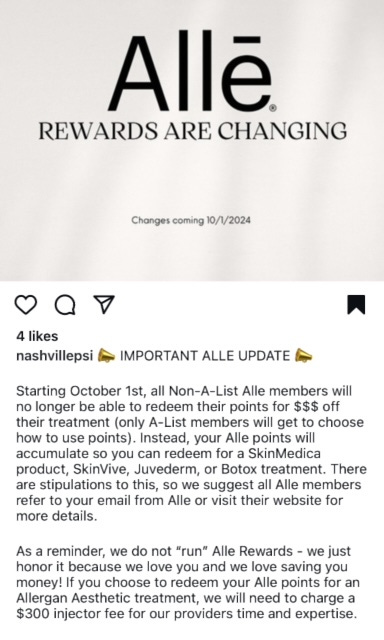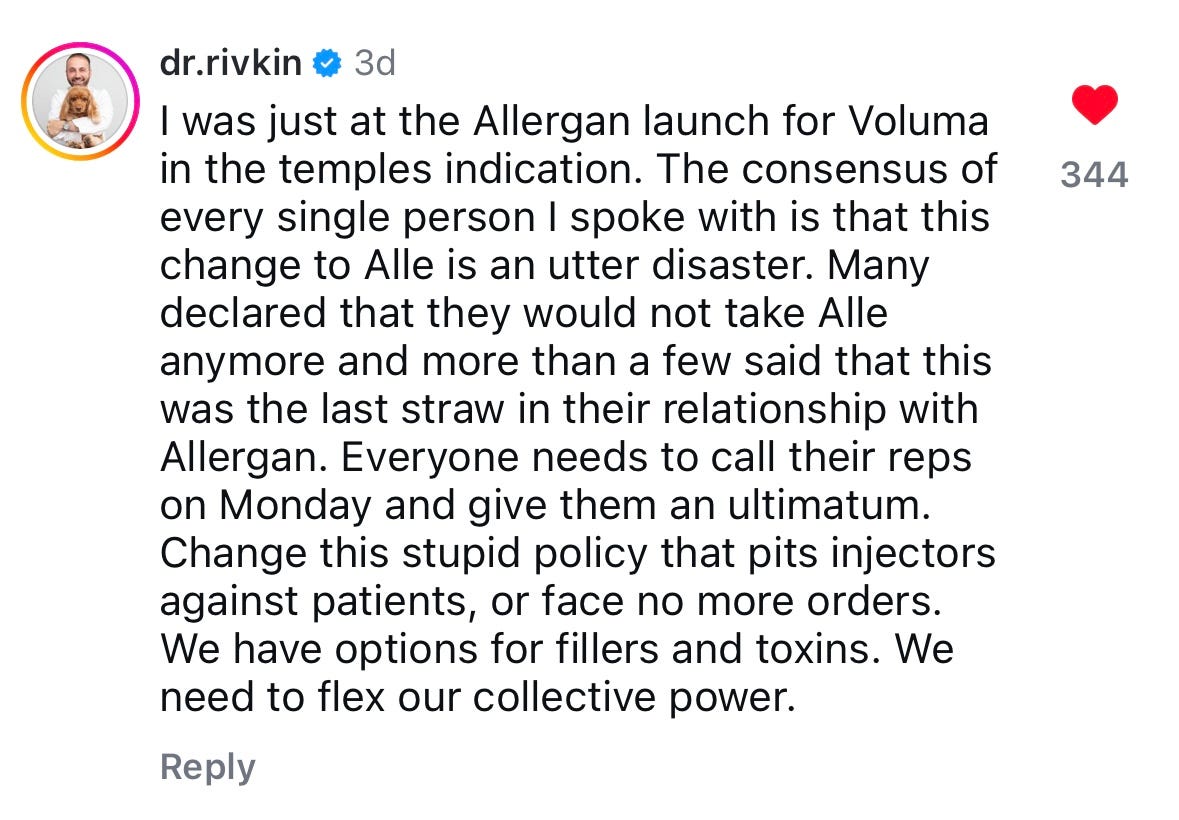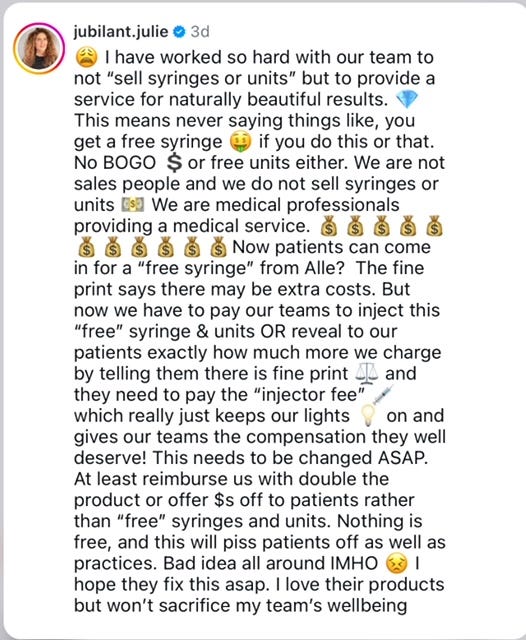Allē Oops
Allergan is revamping its rewards program — and courting controversy in the process. Julie Bass Kaplan, FNP-BC, weighs in on the drama and explains how the changes could affect you.
Welcome readers, old and new!
A couple of posts ago, I wrote about outrage in aesthetics — how it seems I’m constantly reporting on sensitive topics. Well, here we go again.…
Have you been following the drama unfolding around Allē, Allergan’s loyalty program? (Allergan is the manufacturer of Juvéderm, Botox, and more.) Earlier this month, the pharmaceutical giant announced that it will be “making enhancements to the way you can use Allē points,” effective September 30, 2024.
Instead of earning cash off of future treatments, rewards points will now translate directly to specific products, according to the company. Members can redeem 400 or 700 points for select SkinMedia skin care. For 900 points, they’ll get up to 1 mL of a “Juvéderm lips” product (Ultra XC or Volbella XC). For 1,000 points, up to 2 mL of SkinVive; for 1,200 points, up to 50 units of Botox. (Different rules apply to Allē A-listers. It appears they can still trade points for dollars off.)
When exchanging points for filler or Botox, the fine print on the Allē website reads: “While Allē product offers cover the cost of the product itself, your injector will charge you a service fee for their time and expertise.” Your doctor may call this an “injector fee” or a “practice fee.”
As the Allē news spread across social media, controversy erupted. Some doctors publicly disavowed Allē, saying they’ll no longer participate in the program and arguing that it’s unethical for Allergan to dictate which products patients use. (These are prescription medications, after all.) Many blasted the suggested “service fee,” insisting it not only trivializes the role of the practitioner, but also, as one surgeon noted, potentially “pits injectors against patients,” who may not be too happy about having to pay for the “free” product they’ve been promised.
Julie Bass Kaplan (@jubilant.julie) is a family nurse practitioner and certified aesthetic nurse specialist, with a practice in Redding, California (Disappearing Act Medical Aesthetics) and a training center in Ashland, Oregon (Jubilant Medical Aesthetics). She’s been in business since 1999, when the only injectables on the market were collagen-based fillers. She’s also been a paid Allergan trainer since 2011. (She trains for Palette Resources and Galderma, as well, and has affiliations with Merz and Revance.) Still, she tells me, “I was sick to my stomach when I first read about the changes to Allē.”
I called Kaplan in hopes of gaining a better understanding of the controversy and how the Allē updates may affect all of you.
She began our hour-long conversation by describing her early years in the field. “I was injecting collagen the minute I got out of nursing school,” she says, referring to CosmoDerm and CosmoPlast (originally made by Inamed, which was later acquired by Allergan, who discontinued the products in 2010). She recalls learning to inject hyaluronic acid — from her Restylane rep — when the gel was first approved in 2003. “I was filling nasolabial folds like crazy, turning everybody into monkeys,” she says. (Directly filling the folds can give the face a simian look, but it was common practice back then.) “This is how we learned, us pioneers in the field,” she says. Thankfully, “most of the mistakes we made were on our own faces, with our colleagues.”
Another “mistake,” she says, was pricing filler and Botox by the syringe or unit — a move that ultimately contributed to the commoditization of these procedures. Eventually, “I realized, wait a minute, if we're going to charge people by the syringe, we might as well put [the filler] in a bag, tie a bow on it, and hand it to the patient,” she says. “The treatment is more than just the syringe. It's about the medical knowledge and the artistry [provided by] the person pushing the needle or cannula.”
Ideally, what patients are paying for is a safe, natural-looking outcome — and all of the education and nuance that shapes that result — not vials of filler or units of toxin. But the proposed updates to Allē seem to almost celebrate the syringe mentality that many modern practitioners have denounced in recent years.
Here, Kaplan tells me about her recent meeting with Allergan, how Allē is poised to change, and her unique plan for honoring the program.
Keep reading with a 7-day free trial
Subscribe to Aesthetics Unfiltered to keep reading this post and get 7 days of free access to the full post archives.





